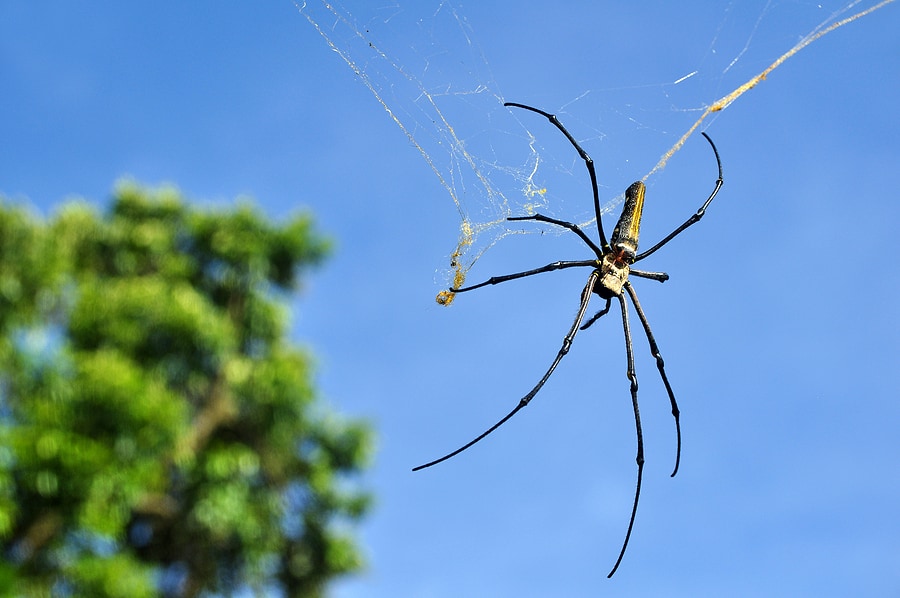READY TO GET STARTED?
REQUEST A FREE ESTIMATE
Fill out the form below or call (888) 466-7849 for a free, no-obligation estimate.

Orb weaver spiders, or orb weavers, are a group of spiders named for their ability to produce round, orb-like webs. They make up the family Araneidae, one of the most diverse groups of arachnids in terms of both size and appearance. Despite their differences, they all have one thing in common: their ability to create large, majestic webs. These webs are circular in shape with grids similar to the spokes of a wheel. Some webs can even measure up to 3 feet in diameter. Let’s take an in depth look to learn all you need to know about orb weavers.
Orb weavers have body types similar to other spiders with 8 legs; 2 body parts (a cephalothorax and abdomen), and chelicera (mouthparts that look like fangs). They range in size from 1.5 to 3 cm. Some are brightly colored, while others are brown or gray. They have large abdomens and hairy legs.
Orb weavers are typically nocturnal and will often build or repair their webs at night. They do not hunt or wander for their food. Instead, they utilize their expansive web making skills to catch their prey. They will usually sit in their webs after they are built waiting for prey to become ensnared. Sometimes they will hide nearby and leave a trigger line of silk connected to the web. The vibrations from the prey run down the line and alert them. They will then bite and paralyze their prey and wrap it in silk to save for dinner later. Orb weavers are most commonly seen in late summer and early fall.
An orb weaver’s diet usually consists of small insects like moths, wasps, beetles, flies, and mosquitoes. Larger spiders will also eat small frogs and hummingbirds.
Orb weavers will take up residence where there is an abundance of prey for them to eat. They can often be found around outdoor lights, tall grass, weeds, fences, bushes, and walls. They can be found in any environment including gardens, grasslands, and cities. Orb weavers are found on every continent except Antarctica and in the Arctic. There are 2800 species worldwide and 180 species in North America.
Prevention is not necessary with orb weavers unless their web is constructed in an inconvenient area or an area with high human traffic. In fact, they can be beneficial to have around as they help keep other pests under control around your home. They don’t cause structural damage and they rarely bite (only if threatened and they cannot escape). Their bite has been compared to a bee sting. You can reduce the chances of having orb weavers around by:
If you have a problem with orb weavers or any other pests, contact your local pest control company for an evaluation and treatment plan.
3 Ways You’re Letting Ants Inside Your Home
How to Get Rid of Ants Outside of Your Home
7 Natural Ways to Keep Snakes Away
Categories